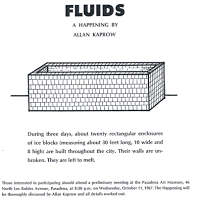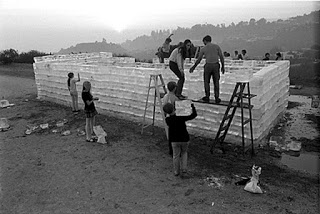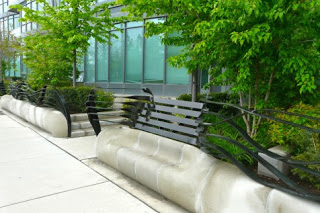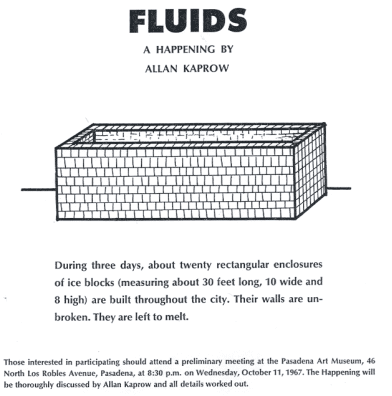Allan Kaprow: “Fluids” (1967)

 Allan Kaprow was an American artist most famously known for the development of what we now know as performance arts. He had created this idea which he had called “Happenings,” to show that the beauty of an art piece is in the eye of the beholder, rather than creating a generalized conception. One of the artworks he had created, which tied into the theory of “Happening” was the sculpture “Fluids.” Fluids was initially a project composed of 30 various ice sculptures spread across public locations throughout California. These ice sculptures were meant to represent the popular concept of permanence, which—at the time—was depicted throughout all art forms. Kaprow’s intentions with this piece was to inhibit, “…a challenge to the traditional understanding of art in public space,” creating a more optimistic and multi-perspective outlook on the concept of art (“Fluids. A Happening By Allan Kaprow”). The most interesting objective I believe the sculpture brings to the viewer is its momentary simplicity. The fact that there is no set time frame for the existence of the art piece, is exactly what makes it the ideal portrayal of the concept of materialistic permanence.
Allan Kaprow was an American artist most famously known for the development of what we now know as performance arts. He had created this idea which he had called “Happenings,” to show that the beauty of an art piece is in the eye of the beholder, rather than creating a generalized conception. One of the artworks he had created, which tied into the theory of “Happening” was the sculpture “Fluids.” Fluids was initially a project composed of 30 various ice sculptures spread across public locations throughout California. These ice sculptures were meant to represent the popular concept of permanence, which—at the time—was depicted throughout all art forms. Kaprow’s intentions with this piece was to inhibit, “…a challenge to the traditional understanding of art in public space,” creating a more optimistic and multi-perspective outlook on the concept of art (“Fluids. A Happening By Allan Kaprow”). The most interesting objective I believe the sculpture brings to the viewer is its momentary simplicity. The fact that there is no set time frame for the existence of the art piece, is exactly what makes it the ideal portrayal of the concept of materialistic permanence.
Citation: http://www.kaprowinberlin.smb.museum/en/
Vito Acconci: “Fence-on-the-loose” (2012)
Vito Acconci is an American artist and architect famously known for his unique designs which encompass modern features, mixed with the effortless beauty of nature. Many of his designs incorporate the use of simple materials, such as steel or glass, to create a one-of-a-kind design sure to be both aesthetically pleasing as well as serviceable. His pieces incorporate an unusual and unconventional design aspect, showcasing the unpredictability of nature. One of the designs that had interested me most was his architectural piece “Fence-on-the-loose.” This design is composed of gloss-black painted steel which is inconsistently twisted and bent into dissimilar designs. The varying shapes create all sorts of patterns, which even include the seat back for a concrete bench. The variation throughout this design creates not only a unique and whimsy aesthetic, but it also shows that even the most abstract art form can be used to create a functional design.

